We have now entered the season of the spring festivals as described in Leviticus 23. In our previous post we highlighted some of the facts regarding the first two feasts of the year, namely Pesach and the feast of Unleavened Bread. In this article, we will be discussing the next appointed time that is most likely also the most overlooked of all. I am referring to the First Fruits offering. Do you really understand why this is, in my opinion, the most important moed for us as followers of Y’Shua our Messiah? Allow me to explain it.
What is First Fruits?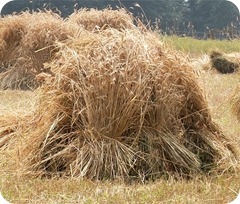
This moed (appointed time) is described in Leviticus 23 together with all the other moedim. However, it is interesting to note that it is not called a feast or a rest day (shabbathon). Just like Rosh Chodesh (new moon) it is a moed where we are called to mark the time with an offering. When the temple was in Jerusalem, the nation (already in Jerusalem for the feast of Unleavened Bread) would gather in the temple to see the priest present this offering to YHVH.
It is also one of the three in-gatherings that is done during the annual cycle of appointed times. We have the in-gathering during First Fruits (barley), Shavout (wheat) and Sukkot (after the gathering of the crops). The first fruits of agriculture are given to YHVH in offerings in acknowledgment of His ownership of the earth. We thank Him for His provision, and we praise Him for his kindness..
Psalm 24:1
1 The earth is YHVH’s, and all it contains, The world, and those who dwell in it.
This transfer invokes His blessing on the rest of the produce. The male firstborn of humans and beasts in Israel become dedicated to YHVH because He saved them from the slaughter of the firstborn of Egypt by the blood of the Pesach Lamb on their lintels. Thus, all the first fruits belong to YHVH.
Proverbs 3:9-10
9 Honor YHVH from your wealth And from the first of all your produce; 10 So your barns will be filled with plenty And your vats will overflow with new wine.
What are the commandments?
Leviticus 23:10-15
10 “Speak to the sons of Israel and say to them, When you enter the land which I am going to give to you and reap its harvest, then you shall bring in the sheaf of the first fruits of your harvest to the priest. 11 He shall wave the sheaf before YHVHÂ for you to be accepted; on the day after the sabbath the priest shall wave it. 12 Now on the day when you wave the sheaf, you shall offer a male lamb one year old without defect for a burnt offering to YHVH. 13 Its grain offering shall then be two-tenths of an ephah of fine flour mixed with oil, an offering by fire to YHVH for a soothing aroma, with its drink offering, a fourth of a hin of wine. 14 Until this same day, until you have brought in the offering of your Elohim, you shall eat neither bread nor roasted grain nor new growth. It is to be a perpetual statute throughout your generations in all your dwelling places. 15 You shall also count for yourselves from the day after the sabbath, from the day when you brought in the sheaf of the wave offering; there shall be seven complete sabbaths.
From this scripture we can see a number for commandments that were given to us:
1. We must bring in the sheaf of the first fruits of the harvest to the priest.
2. The priest must then present this sheaf to YHVH as a wave offering. A wave offering was not moved from side to side but rather lifted up to YHVH as an offer. This will become more significant as we look at the fulfillment of this feast.
WAVE OFFERING The ritual offering of a variety of agricultural products. The Hebrew term is derived from the hiphil form of the verb move back and forth, swing, shake, but the Targum interpretation of it in terms of the motions raise, elevate is more precise. A waving motion seems unlikely since such an action would topple the offering. More likely the offering simply was elevated, thereby dedicating it to YHVH, and then used in sacrifice. Indeed, in the MT the hiphil form of the verb most often occurs in contexts supporting the more logical sense elevate
Myers, A. C. (1987). The Eerdmans Bible dictionary (1048). Grand Rapids, Mich.: Eerdmans.
The same word is also used in the following verse (Strong’s H5130) to describe the action of cutting a stone by striking it.
Exodus 20:25
25 “If you make an altar of stone for Me, you shall not build it of cut stones, for if you wield your tool on it, you will profane it.
3. We are also instructed not to eat from the new harvest before the day that the First Fruits have been lifted up to YHVH.
4. Together with the waving (uplifting) of the sheaf, the priest was also to make an offering that included a lamb, a grain offering and a drink offering.
5. This appointed time is a perpetual statute throughout all our generations in all our dwelling places. We can see that there are no conditions to the statute as it is applicable to all our generations and as one interpretation – wherever we are (dwell – more precise in Hebrew – sit).
Thus, we see no instruction to keep this as a rest day.
When do we celebrate First Fruits?
Leviticus 23:11
11 “He shall wave the sheaf before YHVH for you to be accepted; on the day after the sabbath the priest shall wave it.
From this verse of scripture, we get the instruction that the wave offering of the first fruits must be done “on the day after the Sabbath.”
The day that we do the First Fruits offering is also the day that the counting of the omer starts. After seven Sabbaths, we will celebrate the feast of Shavout.
Y’Shua as the First Fruits
A lot of people, especially our Jewish brothers, see First Fruits as purely a temple service with little or no relevance to our lives today. However, we see this day as a key date in our walk. This is also the day that Y’Shua was resurrected. If we merely celebrate the crucifixion (Pesach) we are only celebrating the death of our Messiah. He was crucified with two other men. They also died, but He was the one Who rose again. He revealed Himself on the day after the Sabbath of the Feast of Unleavened bread.
Matthew 28:1-6
1 Now after the Sabbath, as it began to dawn toward the first day of the week, Mary Magdalene and the other Mary came to look at the grave. 2 And behold, a severe earthquake had occurred, for an angel of YHVH descended from heaven and came and rolled away the stone and sat upon it. 3 And his appearance was like lightning, and his clothing as white as snow. 4 The guards shook for fear of him and became like dead men. 5 The angel said to the women, “Do not be afraid; for I know that you are looking for Y’Shua who has been crucified. 6 He is not here, for He has risen, just as He said. Come, see the place where He was lying.
His disciples knew of His death, but not of His resurrection. In hindsight, it can be found in the Tanakh and He explained it to them.
Psalm 16:10
10 For You will not abandon my soul to Sheol; Nor will You allow Your Holy One to undergo decay.
Y’shua also prophesied His resurrection on a number of occasions:
John 2:18-19
18 The Jews then said to Him, “What sign do You show us as your authority for doing these things?” 19 Y’Shua answered them, “Destroy this temple, and in three days I will raise it up.”
John 12:23-24
23 And Y’Shua answered them, saying, “The hour has come for the Son of Man to be glorified. 24 Truly, truly, I say to you, unless a grain of wheat falls into the earth and dies, it remains alone; but if it dies, it bears much fruit.
Matthew 12:39-40
39 But He answered and said to them, “An evil and adulterous generation craves for a sign; and yet no sign will be given to it but the sign of Jonah the prophet; 40 for just as Jonah was three days and three nights in the belly of the sea monster, so will the Son of Man be three days and three nights in the heart of the earth.
The Pharisees went to Pilate to ensure that the grave be guarded to prevent trickery. Pilate then gave an order for the grave to be guarded.
Matthew 27:62-66
62 Now on the next day, the day after the preparation, the chief priests and the Pharisees gathered together with Pilate, 63 and said, “Sir, we remember that when He was still alive that deceiver said, After three days I am to rise again. 64 Therefore, give orders for the grave to be made secure until the third day, otherwise His disciples may come and steal Him away and say to the people, He has risen from the dead, and the last deception will be worse than the first. 65 Pilate said to them, You have a guard; go, make it as secure as you know how.66 And they went and made the grave secure, and along with the guard they set a seal on the stone.
And later, after His ascension, His disciples also understood what He had said. During Shavout, Peter makes the following statement:
Acts 10:39-41
39 We are witnesses of all the things He did both in the land of the Jews and in Jerusalem. They also put Him to death by hanging Him on a cross. 40 YHVH raised Him up on the third day and granted that He become visible, 41 not to all the people, but to witnesses who were chosen beforehand by YHVH, that is, to us who ate and drank with Him after He arose from the dead.
Later on, Paul also saw this as the sign that Y’shua was the First Fruits from the dead (those who are asleep) and that Moses and the prophets knew this.
Acts 26:22-23
22 “So, having obtained help from YHVH, I stand to this day testifying both to small and great, stating nothing but what the Prophets and Moses said was going to take place; 23 that the Messiah was to suffer, and that by reason of His resurrection from the dead He would be the first to proclaim light both to the Jewish people and to the Gentiles.”
1 Corinthians 15:20-22
20 But now Messiah has been raised from the dead, the first fruits of those who are asleep. 21 For since by a man came death, by a man also came the resurrection of the dead. 22 For as in Adam all die, so also in Messiah all will be made alive.
In this verse, Paul also starts to explain the reason and significance of Y’Shua’s death and resurrection. Adam was the man who brought sin in this world. The punishment for sin is death, hence all of us who have sinned then deserve to die. However, now that the First Fruits have been offered, the rest of the harvest may also be brought in. Thus, as Paul states, only through Y’Shua we will all be made alive.
Colossians 1:17-18
17 He is before all things, and in Him all things hold together. 18 He is also head of the body, the church; and He is the beginning, the firstborn from the dead, so that He Himself will come to have first place in everything.
In the last book of Scripture, John, also called Y’Shua the “firstborn” of the dead and stated that we are released from our sins by the blood (death) of Messiah.
Revelation 1:4-5
4 John to the seven churches that are in Asia: Grace to you and peace, from Him who is and who was and who is to come, and from the seven Spirits who are before His throne, 5 and from Y’Shua the Messiah, the faithful witness, the firstborn of the dead, and the ruler of the kings of the earth. To Him who loves us and released us from our sins by His blood
From all these references, we can now see; it was prophesied from Moses, to the last book of Scripture that Y’shua would be resurrected as the first fruits from the death and that His death and resurrection would release us from our sins.
What does this mean for us?
We need to understand all the feasts to get the complete story. The death of Y’shua alone does not make Him different. All people die, but not all people rise up from the dead. Thus, we need to celebrate the day that Y’Shua became the firstborn of the dead. He conquered the result of sin for us. We have been made free from the punishment of sin, that is death, after He had become the First Fruits offering. This was accomplished by His blood as the Pesach Lamb and His resurrection as the First Fruits of the dead. The salvation is only complete if we understand and appreciate both the feasts and can tie their fulfillment together in the life of Y’Shua our Messiah.
We need to understand the feasts to be able to celebrate the resurrection of our Messiah according to the Scripture. We are not to follow the rules of men. The Scriptures determine that we celebrate the First Fruits on the first day of the week, after the weekly Sabbath, following the 15th day in the month of Abib. Men decided at the Council of Nicea in 325 that we should celebrate this on the first Sunday, following the full moon, after the vernal equinox (computus). From Eusebius’ Church History, we also learn that Polycrates of Ephesus (c.130 – 196) mentioned that the people of the province of Asia, celebrated the resurrection of Y’Shua “always observed the day when the people put away the leaven.” The rest of the Christian world at that time, according to Eusebius, held to “the view which still prevails,” of fixing Easter on Sunday (first day of the week, after the Sabbath). Eusebius does not say how the Sunday was decided. Other documents from the 3rd and 4th centuries, however, reveal that the customary practice was for the early followers of Y’shua to consult their Jewish neighbors to determine when the week of Unleavened Bread would fall, and to set Easter on the Sunday that fell within that week.
This is what sets the Messianic movement apart from both our Jewish and Christian brothers. We do believe that all the feasts of Leviticus 23 need to be observed, but that Y’Shua was the fulfillment of all the Spring feasts. His resurrection was on the first day of the week, not because he changed the Sabbath, but because the First Fruits offering was presented on the day after the Sabbath.
Related articles
How to celebrate Pesach and the feast of unleavened bread
Is the search of Abib barley scriptural


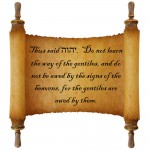

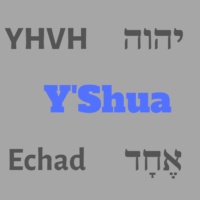
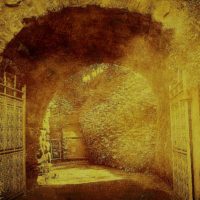


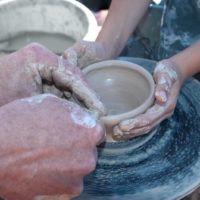
Leave a Reply to "You shall have a holy convocation" | Set Apart People Cancel reply